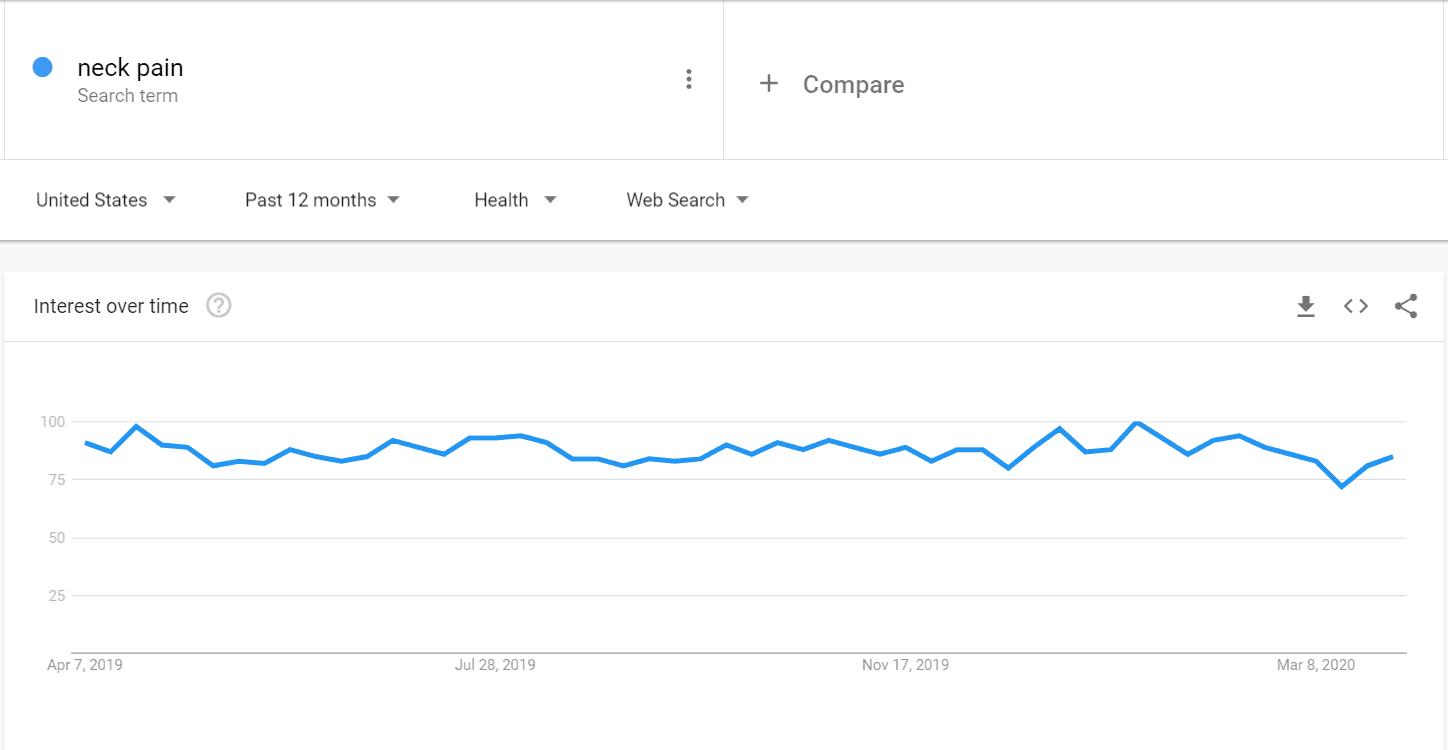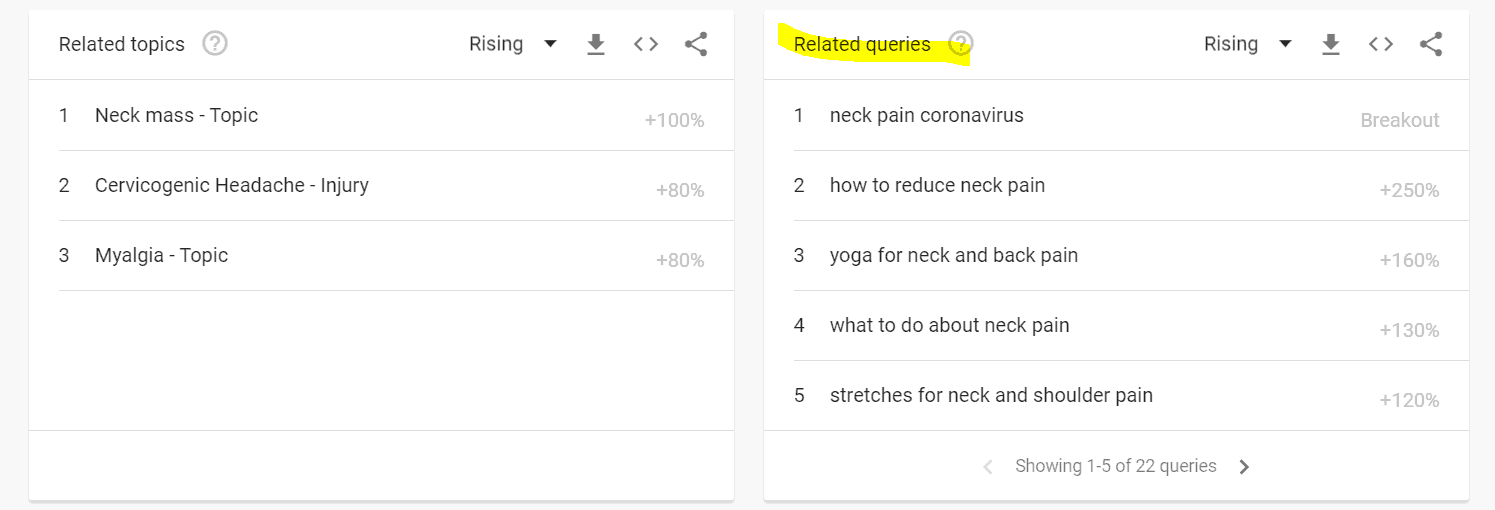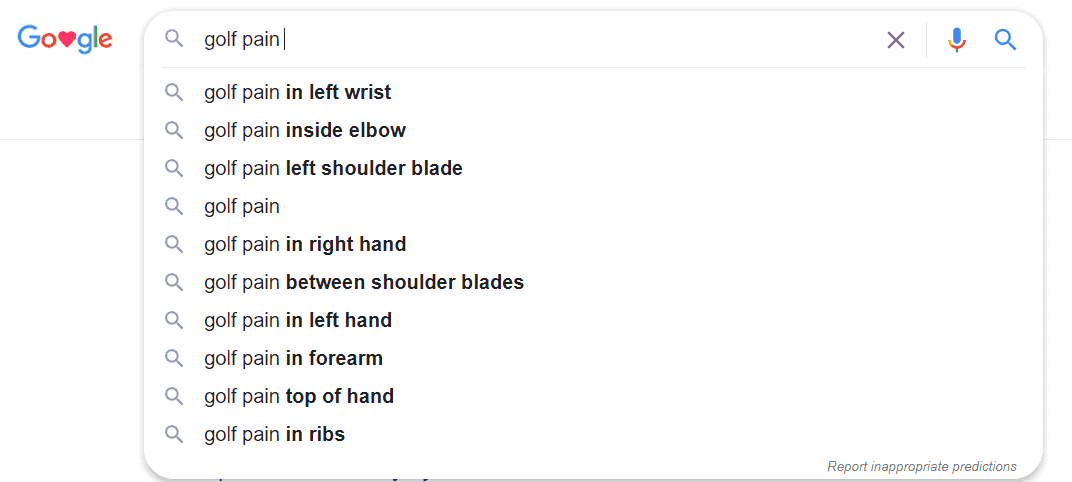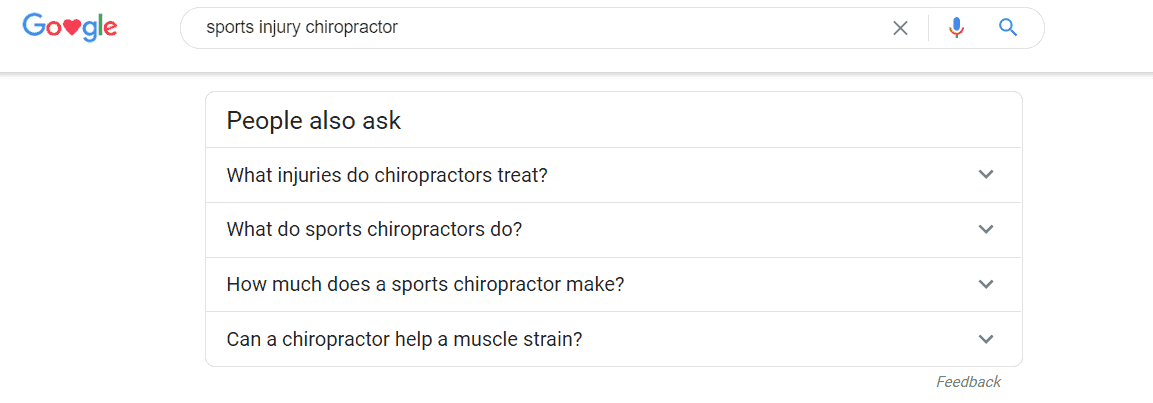With 4 out of 5 of Americans having done a health-related search on the Internet, there is clear opportunity for chiropractors to contribute expert-level knowledge to a growing pool of content.
This same study by the Pew Internet & American Life Project found that 47 percent of these users searched a particular medical treatment or procedure and 28 percent looked for alternative treatments.
Targeting the right chiropractic blog topics creates resources to capture relevant Internet traffic. It also connects potential patients who are seeking expertise with your chiropractic practice.
Skip to:
- Why is blogging important for chiropractic clinics?
- Chiropractic blog topic ideas
- Finding chiropractic blog topics using Google Trends
- Finding chiropractic blog topics using Google Suggest and People Also Ask
- Blogging best practices
- Next steps
Why is blogging important for chiropractic clinics?
Blogging is an essential part of a chiropractic marketing plan.
Building content on a website generates additional traffic from organic search sources, such as Google or Bing. When done correctly, it also attracts targeted audiences that can convert into patients down the road. Another benefit of chiropractic blogs for patients is that they establish clinics and chiropractors as authoritative leaders, contributing to branding and image.
Powerful content combined with chiropractor SEO, or search engine optimization, creates pages that both Google and readers want to see. That means getting the increased visibility on search engines that your content deserves. SEO basics start with targeting questions and topics that people are searching for and optimizing content to get it seen.
What to write about: 5 chiropractic blog topics
Blogging to attract and inform your patients needs direction. Without a strategy to lead content creation, you’re just writing willy nilly and shooting off words into a black hole. Consider blog topics that both your audience can benefit from, and that you can write about at an expert level. Essentially, what expert information are patients seeking that you can provide?
FAQs
How often should I go to the chiropractor? How much do chiropractic services cost? Does insurance cover chiropractors? All these frequently asked questions are a gold mine for chiropractic blog topics that people are asking. To target each question in its own blog, provide in-depth information.
Area of specialty
By getting as detailed as possible on topics within your specialty, you can zero in on a more targeted audience. You’ll also face less competition the more granular you get. For example, rather than writing blogs on “back pain” or “neck pain” broadly, get more specific. A pediatric chiropractic can write about “common children’s back pain” or even “toddler back pain”.
Debunking myths
There’s a lot of misunderstanding and misinformation around chiropractic care. Addressing these issues and setting the record straight reassures potential patients. As always, back up these chiropractic blog topics with plenty of facts and figures from authoritative sources.
Little known facts
What may be second nature to you may not even be on the radar of the vast majority of patients. As such, you can create blogs around some surprising knowledge related to health and chiropractic care. What’s going to catch readers’ attention and keep them engaged?
Actionable guides
“How to identify the sources of your neck pain.”
“How to choose the best sports injury chiropractor.”
Guides provide actionable tips for patients to reference and act upon. They are frequently searched by DIYers, but also those looking for answers to health issues they face.
Brainstorming tip: Finding chiropractic blog topics using Google Trends
Google Trends is a free and remarkably easy-to-use tool to find topics that people are searching. This makes it a great tool for beginners who aren’t SEO experts, but are still looking for data-informed topics to write about.
Here’s an example of how to use Google Trends to hunt down prime chiropractic blog ideas.
1. Type in a broad topic related to your specialty
In this case, we type in “neck pain”, because that’s a common reason why patients might seek out a chiropractor. Data from the last 12 months shows that the topic has been pretty steady in number of searches. This is a good sign, because we know the topic has longevity and can live on your blog without very many updates over the years.
 2. Scroll down to ‘Related queries’ for more specific topics to write about
2. Scroll down to ‘Related queries’ for more specific topics to write about
Here, Google Trends gives us several queries that have had an uptick in interest. Take for instance ‘how to reduce neck pain’. The number of times people search this query has increased by 250%. It’s also closely related to ‘what to do about neck pain’, which has gone up 130% in popularity. This indicates that a blog about ways to treat neck pain would be a great hit on your blog.
 And there you have it!
And there you have it!
After brainstorming a number of topics, pull data from Google Trends to see interest over time. Then, find more specific queries with increases in popularity under ‘Related queries’.
Brainstorming tip: Finding chiropractic blog topics using Google Suggest and People Also Ask
Another fast, free, and easy method for topic research is simply playing around with Google Search. Google’s autocomplete in the search bar reveals commonly searched queries and gives insight into what people are looking for.
1. Type in a topic to find more detailed variations
For example, if we type in ‘golf pain’, we’ll find that other people also have questions about golf pain in very specific areas of the body. A TPI (Titleist Performance Institute) certified chiropractor can take away plenty of topics from this simple search.
 2. Scroll down on the first page for ‘People also ask’
2. Scroll down on the first page for ‘People also ask’
On result pages for relatively broad topics, you’ll sometimes find a ‘People also ask’ box with related questions. These questions shed light on questions related to your query that you can target in new blogs or as part of a bigger topic.

Best practices for chiropractic blogs as a marketing tool
Whether you’re starting a chiropractic blog for patients from scratch or need to pivot an existing one, keep in mind some best practices to guide your strategy and grow your traffic.
- Identify your goals. What’s the end goal of having a blog on your website? Is it to better serve existing patients or attract new ones? Perhaps you aim to promote a particular specialty or give some love to all your areas of practice.
- Write for your audience. Once you pin down a goal, you can then think how to best write for your audience. For example, if you are writing for existing clients, then you can educate on side effects of your services or give information on lesser-known services you offer. On the other hand, new patients might be more interested in alternative treatments for migraines or other conditions that you can care for.
- Create an editorial calendar to plan content months in advance. Consistent posting isn’t just good for SEO, it’s helpful for readers to see that you regularly contribute and stay on top of updating information. An editorial calendar also helps to avoid repetitive topics and makes it easier to organize monthly themes.
- Target a unique topic in each blog. As counterintuitive as it sounds, reinventing the wheel several times over won’t give your blog more exposure. In fact, it may result in all those blogs competing with each other in Google for a higher spot. The result is that you don’t have a single premium piece that ever gets seen.
- Format for great user experience. Let’s face it—no one wants to read an ugly blog. Not only is an unsightly blog unkind on the eyes, it also signals unprofessionalism and lack of attention to detail. If you want readers to trust your content and come back, make it an experience that wows them.
Have lots to write but not sure how to start?
Partnering with an SEO agency kicks your chiropractic blogging journey off on the right foot. While your professional insight makes up the core of any quality blog post, you may need expert guidance to craft strategies that compete with the vast number of other chiropractors websites with blogs already on Google’s first page.
An agency works closely with clients to make sure their chiropractic blog topics are competitive, align with long-term goals, and have consistent technical SEO oversight to ensure a smooth process.
To get an idea of where your chiropractic website stands, get a free SEO audit report.
Read more:
- How to Boost Local SEO Through Chiropractor Directories
- Chiropractic Advertising Examples on Google & Facebook
Markitors is an internet marketing agency with a focus on SEO. We help small businesses rank higher on Google to draw more leads to websites and increase revenue. Explore what’s in our SEO toolbox: audits and keyword research, digital PR, technical SEO, and local SEO.









